





What Is Wrong with the Picture? – Fun Learning with Pictures for Kids
₹80
₹160
50% off
0 (0 ratings)
Grade Levels
Pre-K - Elementary (Ages 3-8)
Content Overview
Format: Printable PDF, Total Pages: 34, Content Breakdown:, 8 pages on Animals & Nature, 6 pages on Clothing & Appearance, 4 pages on Food & Eating, 6 pages on Human Actions, 6 pages on Objects & Vehicles, 4 pages on Seasons & Weather, Features:, 34 engaging questions with illustrations, Simple and fun error-detection questions for kids, Focused on real-world scenarios
Categories
Pages from the Resource
"What Is Wrong with the Picture?" is an engaging activity designed for early learners to identify mistakes in everyday situations. Perfect for improving critical thinking, problem-solving, and language skills, this printable resource helps children understand visual cues while reinforcing common sense and logic. With 34 fun pages covering topics like animals, food, and seasons, it’s ideal for speech therapy, classroom activities, or homeschooling.

Page 1

Page 2
What Users Say
0
0 ratings
5
0+
4
0+
3
0+
2
0+
1
0+
5 Stars
Product is Good to use.
10 months ago
Varsha Parent
Similar Products
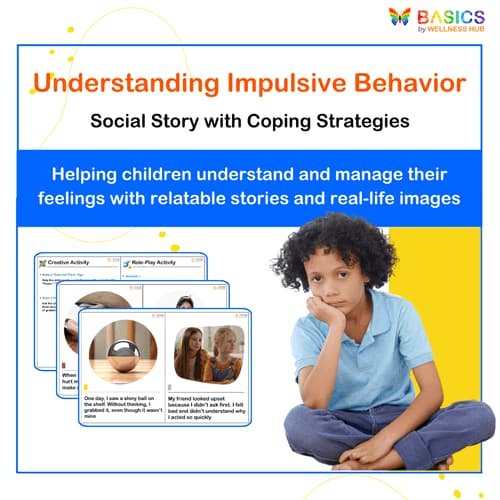
Understanding Impulsive Behavior: Social Story with Coping Strategies
₹ 80.00
₹ 160.00
50% off
4.9 (42 ratings)
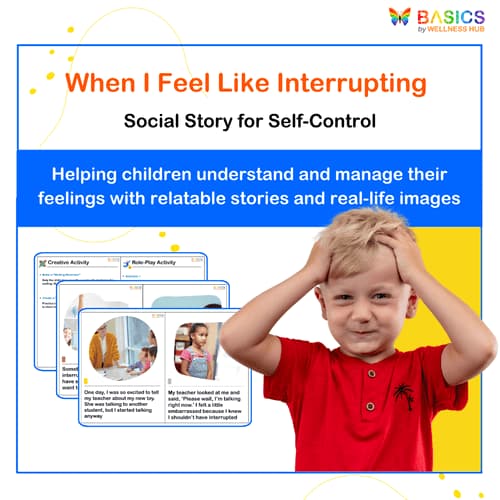
When I Feel Like Interrupting – Social Story for Self-Control
₹ 80.00
₹ 160.00
50% off
4.8 (60 ratings)
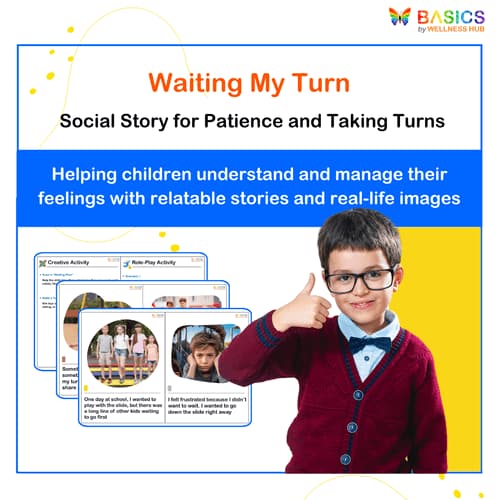
Waiting My Turn – Social Story for Patience and Taking Turns
₹ 80.00
₹ 160.00
50% off
4.7 (56 ratings)
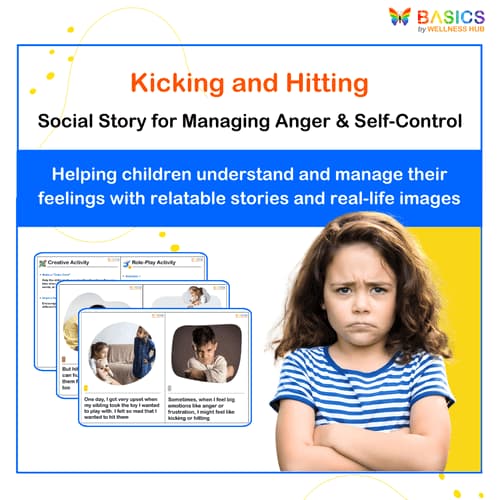
Kicking and Hitting – Social Story for Managing Anger & Self-Control
₹ 80.00
₹ 160.00
50% off
4.6 (52 ratings)
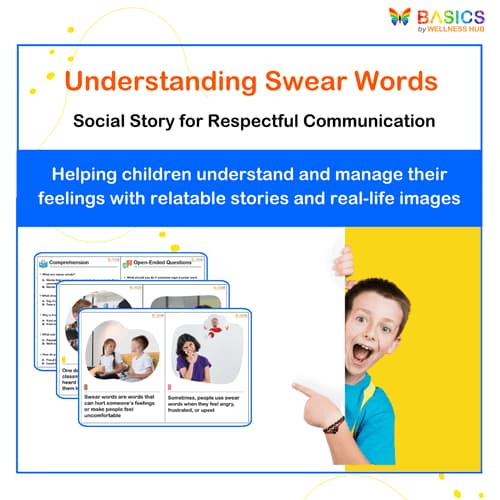
Understanding Swear Words – Social Story for Respectful Communication
₹ 80.00
₹ 160.00
50% off
4.9 (48 ratings)
About the Product
The "What Is Wrong with the Picture?" printable resource is designed to help young learners develop critical thinking, problem-solving, and language skills through fun, interactive activities. This resource is perfect for children ages 3-8, as it provides engaging illustrations with common mistakes to identify, making it a powerful tool for both home learning and classroom environments. By asking kids to identify what’s wrong in everyday situations, this activity enhances their ability to think critically and make logical connections, while also improving visual discrimination skills.
This printable resource covers a wide variety of themes such as animals, food, human actions, clothing, vehicles, and seasons. Each page presents an illustration with a simple mistake for children to spot, followed by an explanation, making it not only fun but also a great learning experience. It’s ideal for parents, teachers, speech therapists, and caregivers looking for an interactive and educational way to engage children.
Product Details
- Title: What Is Wrong with the Picture?
- Format: Printable PDF
- Total Pages: 34 pages
- Content Breakdown:
- 8 pages focusing on Animals & Nature
- 6 pages focusing on Clothing & Appearance
- 4 pages focusing on Food & Eating
- 6 pages focusing on Human Actions
- 6 pages focusing on Objects & Vehicles
- 4 pages focusing on Seasons & Weather
- Skills Covered:
- Critical thinking
- Problem-solving
- Visual discrimination
- Vocabulary building
- Basic error detection
- Sentence structure and articulation
- Understanding real-world situations
This printable activity set is designed to engage children in a fun, hands-on way while helping them understand the importance of observing details and understanding context. With clear illustrations that depict everyday mistakes, children are encouraged to analyze and identify the errors.
Educational Benefits
The "What Is Wrong with the Picture?" resource offers a wide range of educational benefits for children:
- Critical Thinking:
The activity encourages children to analyze visual clues and reason logically, helping them enhance their critical thinking and decision-making skills. - Problem-Solving Skills:
By identifying what's wrong in each picture, children practice problem-solving. They need to think about the cause of the error and how to correct it, which is a vital skill for cognitive development. - Visual Discrimination:
Children improve their ability to spot differences and understand how images and objects relate to one another. This strengthens their visual discrimination skills, which are foundational for tasks like reading and writing. - Vocabulary Building and Articulation:
As children explain the mistakes in the pictures, they learn new vocabulary words related to everyday items and situations, while also practicing articulation as they say the answers out loud. - Social and Emotional Awareness:
Many of the illustrations highlight common mistakes in social settings, such as the incorrect use of clothing, or a child’s actions in a situation (e.g., eating the wrong way), helping children learn appropriate behaviors and the consequences of errors.
Engagement and Motivation:
The fun and visually stimulating nature of the activity keeps children engaged and motivated, encouraging them to practice their skills with each new set of illustrations.
Instructions for Use
Using the "What Is Wrong with the Picture?" printable resource is straightforward and adaptable for different educational settings. Here’s how to use it:
1. Printing the Resource:
Print out the PDF pages and cut them into individual question-answer cards or keep the full pages for a more comprehensive activity. If you want to reuse the resource, you can laminate the pages for durability.
2. Reviewing Each Image:
Start by showing the child an image that contains a simple mistake. Ask them "What is wrong with the picture?" and give them a moment to analyze the image. For example:
- "What is wrong with the picture of the boy wearing mismatched shoes?"
- Answer: "The boy is wearing mismatched shoes. Shoes should match."
3. Encouraging Discussion:
After the child identifies the mistake, ask follow-up questions to expand their thinking:
- "Why is it wrong to wear mismatched shoes?"
- "What should the boy do to fix it?"
This encourages children to expand their answers and think about correct solutions.
4. Expand with More Activities:
After completing the question sets, you can ask the child to create their own mistakes and challenge others to find them. This reinforces creativity and further enhances their observational skills.
5. Role-Playing:
For younger children, incorporate role-playing activities. For example, after identifying the error in the picture of the chef fixing a car, have the child act out the scene with a toy car or pretend to be a chef fixing a meal. This makes the activity more interactive and helps children understand real-world scenarios.
6. Review and Reinforce:
Once all sets are completed, review the mistakes and encourage children to retell the correct way to do things (e.g., "The shoes should match," or "Elephants shouldn’t use umbrellas."). Reinforcing the answers helps solidify their learning.
Tips for Parents and Educators:
- Adjust the complexity: For younger children, you can simplify the questions and focus on one mistake at a time. For older children, add more complex questions like "What should the boy have done differently?"
- Use as a group activity: This resource works well in a group setting, where children can work together to find answers and discuss their ideas.
- Keep it interactive: Encourage children to point to the mistake and explain it in their own words.
Activities Using the Resource
The "What Is Wrong with the Picture?" printable resource is designed to foster children’s problem-solving, critical thinking, and language development through interactive and fun activities. Here are several ways to engage children with this resource:
1. Picture Analysis and Discussion
Each page of the resource contains a question based on a picture, prompting children to identify what's wrong with the scene. Begin by showing the child the image and asking them "What is wrong with the picture?" Allow them time to think about the details. For example, when viewing the image of a chef fixing a car, ask the child:
- "What is wrong with the picture?"
- Answer: "The chef is fixing a car. A chef should be cooking, not fixing cars."
Encourage children to explain why the error is wrong and what the correct action would be. This promotes critical thinking and logical reasoning.
2. Role-Playing and Creative Activity
Once children identify the mistakes, encourage them to act out the correct action. For instance, in the case of the picture where a frog is wearing sunglasses, encourage the child to pretend to be the frog and correct the mistake, such as taking off the sunglasses and explaining why frogs don’t need them. Role-playing helps children internalize the lesson and apply it to real-life scenarios.
3. Group Discussions and Sharing Ideas
This resource can also be used in a group setting where children can discuss the pictures together and share their ideas. For example, show a group of children the picture of a car driving on train tracks. Ask them:
- "What is wrong with this picture?"
- Answer: "The car is driving on train tracks. Cars should stay on roads."
Encourage the group to discuss why it’s dangerous for cars to drive on train tracks, fostering collaboration and group learning.
4. Sentence Expansion and Vocabulary Building
After identifying the errors, have children expand their answers by forming full sentences. For example, for the picture where a camel is in a snowy place, they could say:
- "A camel does not belong in the snow because camels live in hot, dry deserts."
This expands their vocabulary while reinforcing sentence structure and articulation skills.
5. Reinforcement with Drawing
For younger learners, provide drawing materials and have them draw their own version of a scene with a mistake. For example, ask them to draw a picture of a fish using an umbrella, then explain what is wrong and how the fish should behave in the water. This activity helps children apply their learning creatively.
6. Create Their Own Mistakes
Challenge children to create their own “mistake” pictures. After reviewing all the provided sets, let them draw an image with a mistake of their choice, then ask their peers or parents to identify it. This activity encourages creativity while reinforcing error identification skills.
FAQs
Q1. What age group is this resource suitable for?
This resource is ideal for children aged 3 to 8 years. It’s perfect for preschoolers, kindergartners, and early elementary students who are learning to understand common sense, problem-solving, and social behaviors.
Q2. How can I use this printable in speech therapy?
This resource is highly effective in speech therapy as it helps children practice answering questions, expanding sentences, and articulating clearly. You can use it to encourage children to describe the mistakes, explain why they are wrong, and build sentence structures.
Q3. Can this be used for group activities?
Yes! This printable works well in group activities. Children can take turns identifying the mistakes, discuss their answers, and share reasoning. It promotes social learning, collaboration, and teamwork.
Q4. How do I get my child to use this printable?
To engage children with this resource, begin by showing them the pictures and asking them the question: "What is wrong with the picture?" Let them identify the mistake and discuss the correct action. Reinforce the lesson by expanding the answers into full sentences. You can also integrate role-playing to make the learning process more interactive.
Q5. Can this printable help my child with language development?
Yes, absolutely! This resource encourages language development in several ways. It helps children understand concepts like what is right and wrong, expand their vocabulary, and form complex sentences. It's great for practicing question-answer formation and improving articulation.
Q6. Can this resource be used in a homeschooling environment?
Definitely! This printable is perfect for homeschooling as it promotes critical thinking, problem-solving, and language development. It can be used alongside other learning materials to create a well-rounded educational experience.
Usage Rights and Restrictions
- This resource is for personal and educational use only.
- You may print and use the "What Is Wrong with the Picture?" printable for home use, in classrooms, speech therapy, or homeschooling settings.
- Redistribution or resale of the printable is not permitted.
- The printable may not be used for any commercial purposes unless explicitly permitted.
If you're an educator, therapist, or parent, feel free to print and use the resource as much as needed, but please respect the terms of use.
Conclusion
The "What Is Wrong with the Picture?" printable resource is a fun, engaging, and educational tool that helps children develop problem-solving, critical thinking, and language skills. The real-world scenarios, accompanied by clear illustrations, allow children to learn in an interactive and enjoyable way. By identifying common mistakes, children not only learn important life lessons but also improve their visual discrimination, sentence structure, and articulation skills.
Whether used in the classroom, speech therapy sessions, or at home, this resource will provide children with the opportunity to engage in a meaningful learning experience. Encourage creativity, expand vocabulary, and build language skills through a simple and interactive activity that both children and adults will enjoy.
Download your copy today and start using this valuable tool to foster critical thinking and language development in your child’s learning journey!



